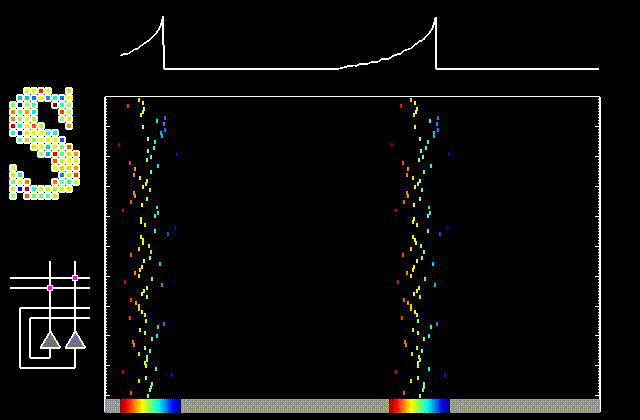Memory - Storing patterns
When we visit a new place, our brains remember it. The brain region responsible is the hippocampus, which stores sensory experiences. To do this, neuroscientists hypothesize that it activates a unique set of neurons, which when reactivated recalls the place.
To store an experience, the hippocampus potentiates synapses among active neurons.
When a presynaptic spike repeatedly precedes a postsynaptic one, the synapse potentiates (turns on). When a presynaptic spike repeatedly follows a postsynaptic one, the synapse depresses (turns off), hence the name spike timing-dependent plasticity (STDP).
The hippocampus can retrieve an experience when only a fraction of its neurons are activated; they recruit the missing ones through potentiated synapses, recalling the memory.
The hippocampus is also responsible for capturing the sequence in which events occur. We are exploring how interactions between denate gyrus and CA3, two of the hippocampus' three regions, could enable it to do this. This will help us understand how memories form in a way that preserves your sense of time and place.
